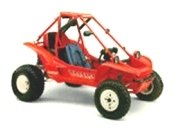
PilotOdyssey.com

 |
PilotOdyssey.com |
|
| It is currently Sat May 17, 2025 2:20 pm |
|
All times are UTC - 5 hours [ DST ] |
 
|
Page 2 of 7 |
[ 165 posts ] | Go to page Previous 1, 2, 3, 4, 5 ... 7 Next |
|
| Author | Message | |||
|---|---|---|---|---|
| bullnerd |
|
|||
|
Joined: Sun Dec 24, 2006 5:58 pm Posts: 2320 Location: near NJ rider |
|
|||
| Top | |
|||
| DMoneyAllstar |
|
|||
|
Joined: Tue Jan 10, 2012 10:21 am Posts: 2681 Location: NW Ohio / SE Michigan |
|
|||
| Top | |
|||
| bullnerd |
|
|||
|
Joined: Sun Dec 24, 2006 5:58 pm Posts: 2320 Location: near NJ rider |
|
|||
| Top | |
|||
| DMoneyAllstar |
|
|||
|
Joined: Tue Jan 10, 2012 10:21 am Posts: 2681 Location: NW Ohio / SE Michigan |
|
|||
| Top | |
|||
| bullnerd |
|
|||
|
Joined: Sun Dec 24, 2006 5:58 pm Posts: 2320 Location: near NJ rider |
|
|||
| Top | |
|||
| DMoneyAllstar |
|
|||
|
Joined: Tue Jan 10, 2012 10:21 am Posts: 2681 Location: NW Ohio / SE Michigan |
|
|||
| Top | |
|||
| DMoneyAllstar |
|
|||
|
Joined: Tue Jan 10, 2012 10:21 am Posts: 2681 Location: NW Ohio / SE Michigan |
|
|||
| Top | |
|||
| DMoneyAllstar |
|
|||||||||
|
Joined: Tue Jan 10, 2012 10:21 am Posts: 2681 Location: NW Ohio / SE Michigan |
|
|||||||||
| Top | |
|||||||||
| DMoneyAllstar |
|
|||||||||
|
Joined: Tue Jan 10, 2012 10:21 am Posts: 2681 Location: NW Ohio / SE Michigan |
|
|||||||||
| Top | |
|||||||||
| DMoneyAllstar |
|
|||
|
Joined: Tue Jan 10, 2012 10:21 am Posts: 2681 Location: NW Ohio / SE Michigan |
|
|||
| Top | |
|||
| DMoneyAllstar |
|
|||||
|
Joined: Tue Jan 10, 2012 10:21 am Posts: 2681 Location: NW Ohio / SE Michigan |
|
|||||
| Top | |
|||||
| bullnerd |
|
|||
|
Joined: Sun Dec 24, 2006 5:58 pm Posts: 2320 Location: near NJ rider |
|
|||
| Top | |
|||
| bullnerd |
|
|
|
Joined: Sun Dec 24, 2006 5:58 pm Posts: 2320 Location: near NJ rider |
||
| Top | |
|
| DMoneyAllstar |
|
|||||||
|
Joined: Tue Jan 10, 2012 10:21 am Posts: 2681 Location: NW Ohio / SE Michigan |
|
|||||||
| Top | |
|||||||
| DMoneyAllstar |
|
|||
|
Joined: Tue Jan 10, 2012 10:21 am Posts: 2681 Location: NW Ohio / SE Michigan |
|
|||
| Top | |
|||
| bullnerd |
|
|||
|
Joined: Sun Dec 24, 2006 5:58 pm Posts: 2320 Location: near NJ rider |
|
|||
| Top | |
|||
| DMoneyAllstar |
|
|||
|
Joined: Tue Jan 10, 2012 10:21 am Posts: 2681 Location: NW Ohio / SE Michigan |
|
|||
| Top | |
|||
| bullnerd |
|
|||
|
Joined: Sun Dec 24, 2006 5:58 pm Posts: 2320 Location: near NJ rider |
|
|||
| Top | |
|||
| DMoneyAllstar |
|
||||||
|
Joined: Tue Jan 10, 2012 10:21 am Posts: 2681 Location: NW Ohio / SE Michigan |
|
||||||
| Top | |
||||||
| bullnerd |
|
|||
|
Joined: Sun Dec 24, 2006 5:58 pm Posts: 2320 Location: near NJ rider |
|
|||
| Top | |
|||
| consol |
|
|||
|
Joined: Tue Feb 12, 2013 1:01 pm Posts: 341 Location: North San Diego |
|
|||
| Top | |
|||
| DMoneyAllstar |
|
|||
|
Joined: Tue Jan 10, 2012 10:21 am Posts: 2681 Location: NW Ohio / SE Michigan |
|
|||
| Top | |
|||
| bullnerd |
|
|||
|
Joined: Sun Dec 24, 2006 5:58 pm Posts: 2320 Location: near NJ rider |
|
|||
| Top | |
|||
| Lee |
|
||||||||
|
Joined: Mon Dec 22, 2003 9:04 am Posts: 465 Location: Springfield Ohio |
|
||||||||
| Top | |
||||||||
| DMoneyAllstar |
|
|||
|
Joined: Tue Jan 10, 2012 10:21 am Posts: 2681 Location: NW Ohio / SE Michigan |
|
|||
| Top | |
|||
 
|
Page 2 of 7 |
[ 165 posts ] | Go to page Previous 1, 2, 3, 4, 5 ... 7 Next |
|
All times are UTC - 5 hours [ DST ] |
Who is online |
Registered users: Bing [Bot], eseymour72, Google [Bot], Lanix, wyeeoddy |
| You cannot post new topics in this forum You cannot reply to topics in this forum You cannot edit your posts in this forum You cannot delete your posts in this forum You cannot post attachments in this forum |